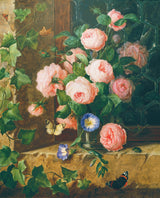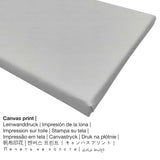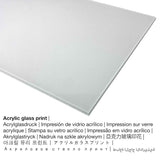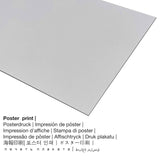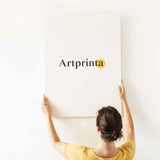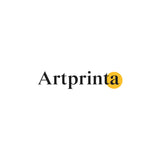Josef Lauer, 1839 - Blumenstillleben - mbipụta nka mara mma
Ụtụ gụnyere. Mbupu gbakọrọ na ndenye ọpụpụ.
(© - nke Belvedere - www.belvedere.at)
The magnificent flower and fruit bouquets that have arisen in the early 19th century in the imperial city Vienna, can not be described as a Viennese invention. Ọ bụ ajụjụ nke iburu ọsọ na eserese Dutch nke narị afọ nke 17 na nke 18 n'ụdị onyonyo dị elu. Onye na-ese ihe na Viennese maara ọtụtụ n'ime ọrụ ndị a site na nchịkọta nke ndị ama ama Austria, Ụlọ Akwụkwọ Academy Gallery na Imperial Picture Gallery. N'ime nhazi ndị a magburu onwe ya n'ikpeazụ, a na-echeghị echiche na nhọrọ nke okooko osisi na mkpụrụ osisi, bụ nke weere ọnọdụ na-emekarị mgbe agba na njedebe iwu, ma ọ na-adịkarịghị egosipụta eziokwu n'ihi na ọtụtụ n'ime ndị jikọtara ọnụ na osisi eserese adịghị ahụ ibe ha n'eziokwu ka ha dị iche iche oge. oge ntoju. Dị mkpa na nke a visual na acha "Fireworks" uto nke asịwo, nakwa dị ka ọchịchọ ya ji achọ bụ. Dị ka ihe ndabere maka ezigbo nchikota ya mere ọmụmụ akwụkwọ eji okooko osisi ndị dị ma na ifuru eserese ụlọ akwụkwọ nke Imperial Academy of Fine Arts nakwa dị iche iche greenhouses. Na njikọ na vases ornate, goblets ma ọ bụ obere ọkpụkpụ, n'azụ ijide echiche nke odida obodo ma ọ bụ ihe osise dị mkpa nke oge gara aga, ihe ngosi ndị a malitere n'ikpeazụ ihe owuwu nke na-egbo mkpa onye ahịa maka ihe nnọchiteanya. A na-ewere ha dị ka ihe ịchọ mma, dị ka ihe ịchọ mma nke Ụlọ Mmanya ahụ. Ihe ọchị Viennese na eserese ndị a na-egosipụta na agba ndị bara ụba na ihe fọrọ nke nta ka ọ bụrụ ihe na-emetụ n'ahụ, ọnụnọ mmetụta uche nke isiokwu ahụ. In this richly varied variety of still life, the works of Josef Lauer take from almost simple. Lauer did not try the viewer's eye through a form and color noise to hide, because he built his bouquets on only a few individual elements. It is also just about a bunch of wild roses, which has been joined by a winch. The flowers were placed in a large glass and parked in a stone window niche without a formative hand would have taken a closer look it. The chance to be decisive here. For this, the Rosenzweig carelessly lying at the foot of the glass speak as well as on all sides down tending flowers. So it was not the optimal presentation of plants, which sought the artist here, but the reference to their naturalness. However, for lurking this naturalness also had in turn limits, because as far as the slightly older colleague Ferdinand Georg Waldmüller (1793-1865), of the roses has held in its various stages of bloom up to the state of withering in the picture, he still was not able to walk. In addition, a certain urge to elaborate figures makes itself in the present illustration noticeable is like to see the course of the creeping ivy, or even in the lighting, which specifically emphasizes one or another detail. The leaves and flowers but refer to a detailed study of the nature, the exact reproduction of what is seen is particularly evident in the detailed drawing of red rows of prongs on the rose branches to buds. This accurate representation of natural forms is based on meticulous studies that the artist already operated as a student at the Vienna Academy and a life has continued for. Ihe dị ịrịba ama nke ndụ ndị ka dị ndụ site n'aka Josef Lauer bụkwa nsonye nnụnụ na ụmụ ahụhụ na foto ya. So also this bouquet buzz around ever so slightly more butterflies, as an admiral and a cabbage white at the bottom. Top left you see a burnet, also called blood droplets, and in the center of the image rests a male Bluebird with half the collapsed wings on a rose petal. The green iridescent beetle on flat stone is a rose beetle which probably nibble of the fallen to the ground Rose pollen.
Nkọwa nke ihe osise, nke nwere aha "Blumenstillleben"
In 1839 onye na-ese ihe Josef Lauer painted the 19th century work of art. The original was painted with the size: 52,5 x 45 cm - akụkụ etiti: 65 x 54 x 7 cm and was manufactured on the medium oil on canvas. The artwork's inscription is - "signed and dated lower right: Jos: Lauer 1839". It forms part of the Belvedere's digital collection located in Vienna, Austria. Obi dị anyị ụtọ ikwupụta na ngalaba ọha masterpiece na-ọnọ n'ikike nke © Belvedere, Vienna, nọmba ngwa ahịa: 8045. Ọzọkwa, ọrụ nka nwere akara kredit: nyefee site na Kunsthistorisches Museum, Vienna na 1987. Ọzọkwa, itinye n'usoro Eserese format ya na oke onyonyo nke 1: 1.2, nke pụtara na ogologo bụ 20% mkpụmkpụ karịa obosara. Josef Lauer was a male painter, whose artistic style can be classified as Realism. The European painter was born in the year 1818 in Vienna, Vienna state, Austria and died at the age of 63 in 1881 in Vienna.
Ihe ndị a na-ahọrọ
Maka ngwaahịa ọ bụla anyị na-enye ihe dị iche iche dị iche iche na nha. Ị nwere ike ịhọrọ n'ime nhọrọ nhazi ngwaahịa ndị a:
- Mbipụta nke aluminom: This is a metal print made on aluminium dibond material with a true depth. The colors of the print are luminous, fine details are crisp and clear.
- Mbipụta enyo acrylic: A glossy acrylic glass print, often labelled as a plexiglass print, will turn the original artwork into décor. Beyond that, the acrylic print forms a distinct alternative option to aluminium and canvas art prints. The artwork is being made with the help of modern UV print machines. This creates deep and rich colors. The major upside of an acrylic glass print is that sharp contrasts as well as granular image details will be more visible with the help of the fine gradation of the print. The real glass coating protects your selected art print against sunlight and heat for many years to come.
- Akwụkwọ mmado ebipụtara (akwa akwa akwa): The Artprinta poster is a printed canvas with a slight texture on the surface. It is ideally suited for framing your fine art print in a personal frame. Please note, that depending on the size of the poster print we add a white margin of around 2-6cm round about the print motif to facilitate the framing with your custom frame.
- Mbipụta kanvas: The canvas print, not to be confused with a painting on a canvas, is an image applied on a cotton canvas. What is more, canvas generates a soft, pleasing appearance. Canvas prints are relatively low in weight, which implies that it is easy and straightforward to hang your Canvas print without additional wall-mounts. Canvas prints are suitable for any kind of wall.
Banyere onye na-ese ihe
| Aha onye nka: | Josef Lauer |
| Aha nka ndị ọzọ: | Laur Josef, josef lauer, joseph lauer, lauer josef, lauer joseph, lauer, Lauer Josef |
| okike nke onye nka: | nwoke |
| Nationality: | Ọstrịa |
| Ọrụ: | onye na-ese ihe |
| Mba onye si: | Austria |
| Nkewa onye nka: | omenkà nke oge a |
| Ụdị nke onye na-ese ihe: | Ihe ngosi |
| Ndụ: | 63 afọ |
| Amụrụ n'afọ: | 1818 |
| Amụrụ na (ebe): | Vienna, Vienna steeti, Austria |
| Nwuru: | 1881 |
| Ebe ọnwụ: | Vienna |
Nkọwa na mpempe nka pụrụ iche
| Aha nka: | "Blumenstillleben" |
| Nchịkọta nke ọrụ nka: | sere |
| Otu sara mbara: | nkà nke oge a |
| Century: | 19th narị afọ |
| Emepụtara na: | 1839 |
| Afọ nka: | karịa afọ 180 |
| Ihe osise izizi: | mmanụ na kwaaji |
| Akụkụ nke ihe osise izizi: | 52,5 x 45 cm - akụkụ etiti: 65 x 54 x 7 cm |
| Ederede nka nka izizi: | signed and dated lower right: Jos: Lauer 1839 |
| Ụlọ ihe ngosi nka: | Belvedere |
| Ebe ngosi nka: | Vienna, Austria |
| Ebe nrụọrụ weebụ ihe ngosi nka: | www.belvedere.at |
| Licensedị ikike: | ngalaba ọha |
| Site n'aka: | © Belvedere, Vienna, nọmba ngwa ahịa: 8045 |
| Ebe kredit nke ọrụ nka: | nyefee site na Kunsthistorisches Museum, Vienna na 1987 |
Ozi ihe ahaziri ahazi
| Nkewa edemede: | nka nka |
| Usoro mmeputakwa: | mmeputakwa n'ụdị dijitalụ |
| Usoro nhazi: | Mbipụta UV ozugbo (mbipụta dijitalụ) |
| Nlụpụta: | German mmepụta |
| Stockdị ngwaahịa: | a na-achọ |
| Ihe eji eme atụmatụ: | mgbidi gallery, mgbidi ndozi |
| Ndepụta: | nhazi ihe osise |
| Oke akụkụ: | ( Ogologo: obosara) 1: 1.2 |
| Mmetụta akụkụ: | ogologo bụ 20% mkpụmkpụ karịa obosara |
| Akụrụngwa ị nwere ike ịhọrọ site na: | Mpempe akwụkwọ mmado (akwụkwọ kwaaji), mbipụta kanvas, mbipụta ọla (aluminium dibond), mbipụta iko acrylic (nwere ezigbo mkpuchi iko) |
| Canvas dị n'elu ihe nrịbama (mbipụta kanvas) nha dị iche iche: | 50x60cm - 20x24", 100x120cm - 39x47", 150x180cm - 59x71" |
| Mbipụta iko acrylic (nwere ezigbo mkpuchi iko) nhọrọ nha: | 50x60cm - 20x24", 100x120cm - 39x47" |
| Mpempe akwụkwọ mmado (akwụkwọ kwaaji) nha: | 50x60cm - 20x24", 100x120cm - 39x47" |
| Nhọrọ nha nha nke Dibond (ihe alumnium): | 50x60cm - 20x24", 100x120cm - 39x47" |
| ụba: | enweghị etiti |
Disclaimer: We do all that we can to depict the art products as accurately as possible and to demonstrate them visually in our shop. Please bear in mind that the pigments of the print materials and the printing can differ marginally from the representation on your device's monitor. Depending on your screen settings and the quality of the surface, not all color pigments are printed 100% realistically. In view of the fact that the are printed and processed manually, there may also be slight discrepancies in the size and exact position of the motif.
Nwebiisinka © | www.artprinta.com (Artprinta)

